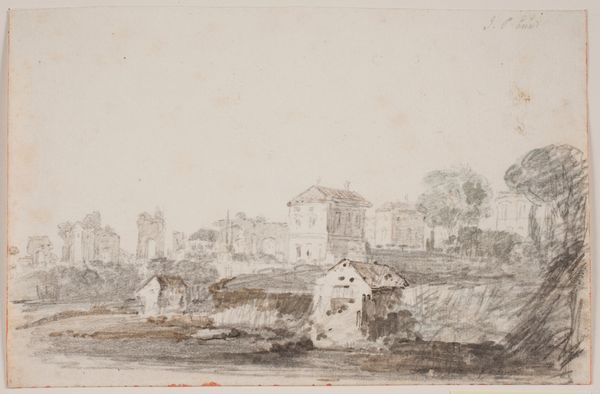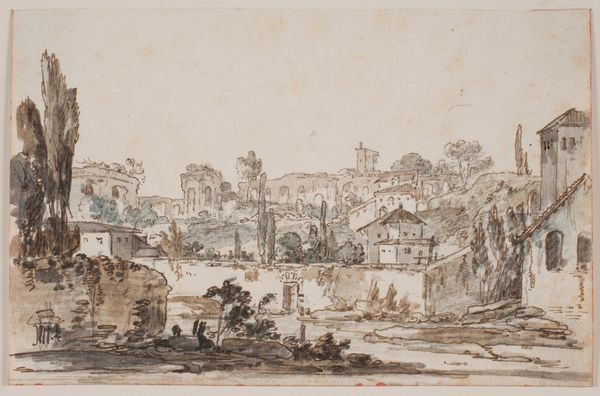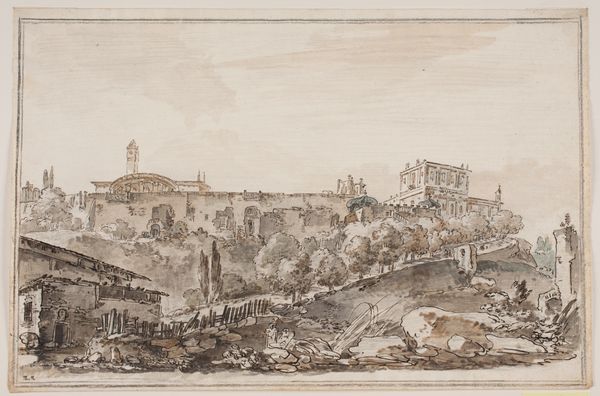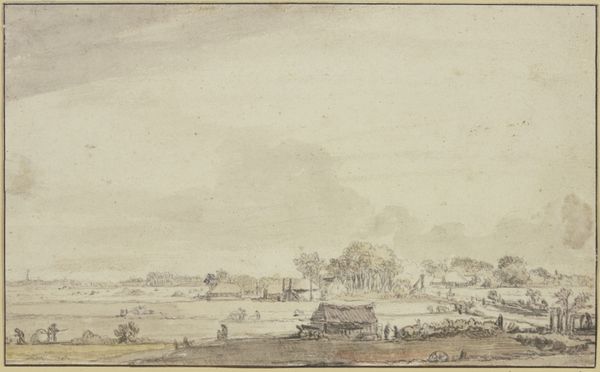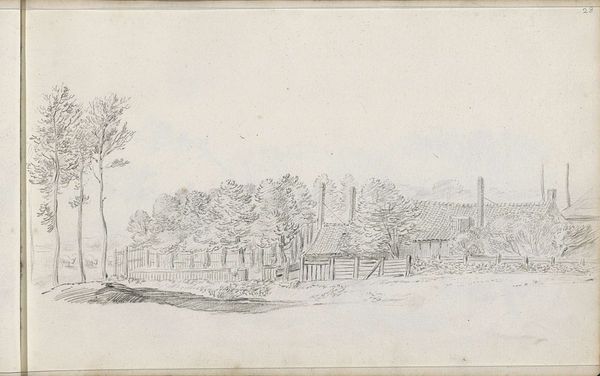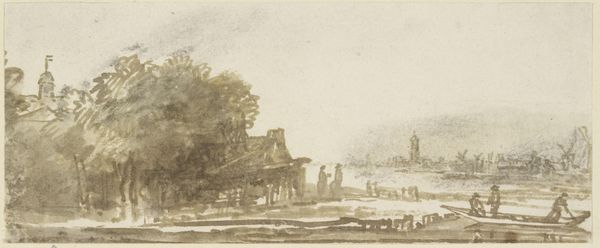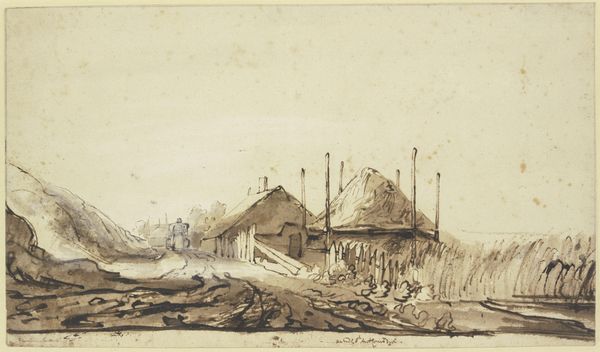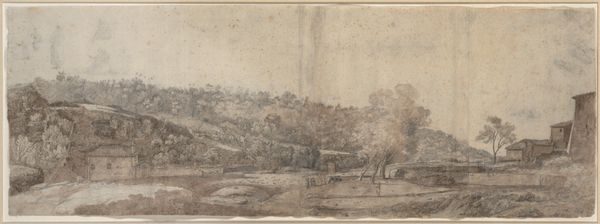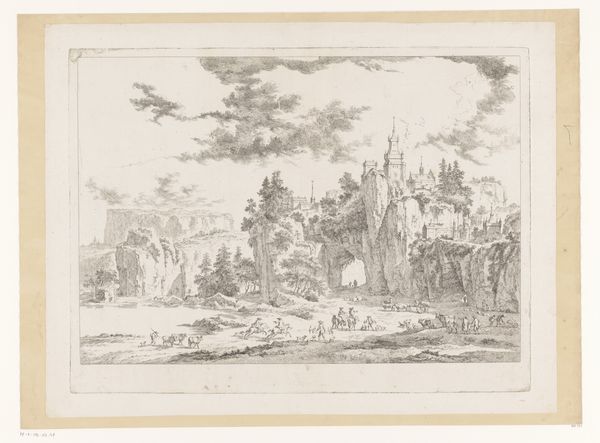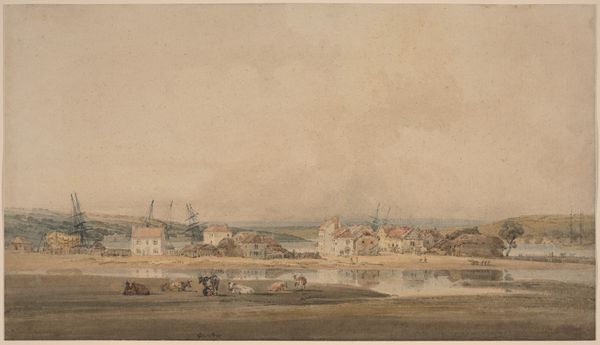
drawing, charcoal
#
drawing
#
neoclacissism
#
landscape
#
charcoal drawing
#
cityscape
#
charcoal
Dimensions: 138 mm (height) x 213 mm (width) (bladmaal)
Editor: This is Jens Petersen Lund's "Romersk" prospekt, dating sometime between 1730 and 1793. It's a charcoal drawing and seems to capture a cityscape. There's a sort of melancholic, almost ghostly feel to it. What strikes you about this work? Curator: For me, it’s the artist's process and the raw materials that immediately grab attention. Consider the social context; a Danish artist depicting Rome using charcoal. How did this medium influence the representation of a "classical" landscape? Is it about making "high art" accessible through humble materials? Editor: That's a great point! I hadn’t considered the accessibility aspect. Do you think the use of charcoal reflects the available resources, or perhaps a deliberate choice to create a specific mood, like the ruins and the ordinary materials mirror each other? Curator: Precisely! The 'how' and 'why' of creation become crucial. Look closely; see how Lund uses the charcoal not to idealize, but almost to excavate, to reveal a sense of labor and impermanence. Is the focus really Rome, or Lund's engagement with its representation and the materiality that shapes that? Editor: So it’s less about the actual cityscape and more about Lund’s interaction with the materials at hand to recreate it. I suppose Neoclassicism typically invokes grand, polished imagery, but the charcoal introduces something altogether more personal and immediate here. Curator: Indeed. It challenges our understanding. Consumption, materiality and the artist’s mark itself. I leave thinking about how materials can carry and complicate ideas about place and representation.
Comments
No comments
Be the first to comment and join the conversation on the ultimate creative platform.
